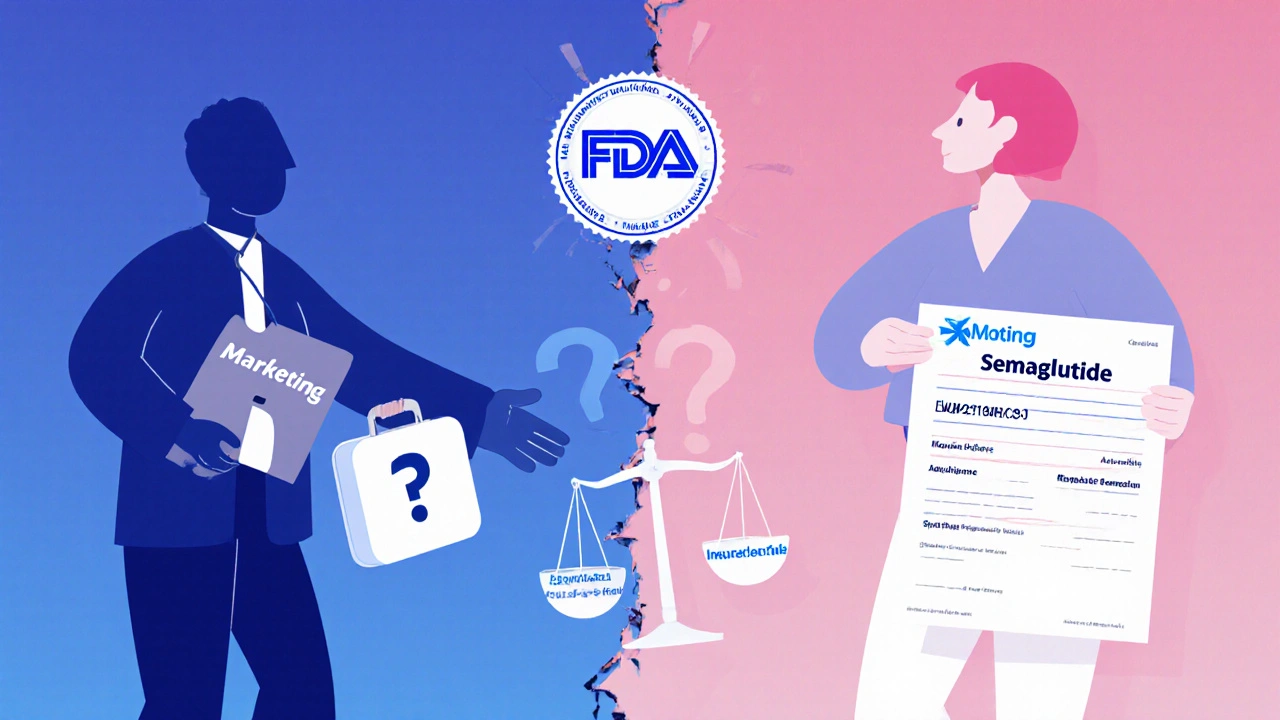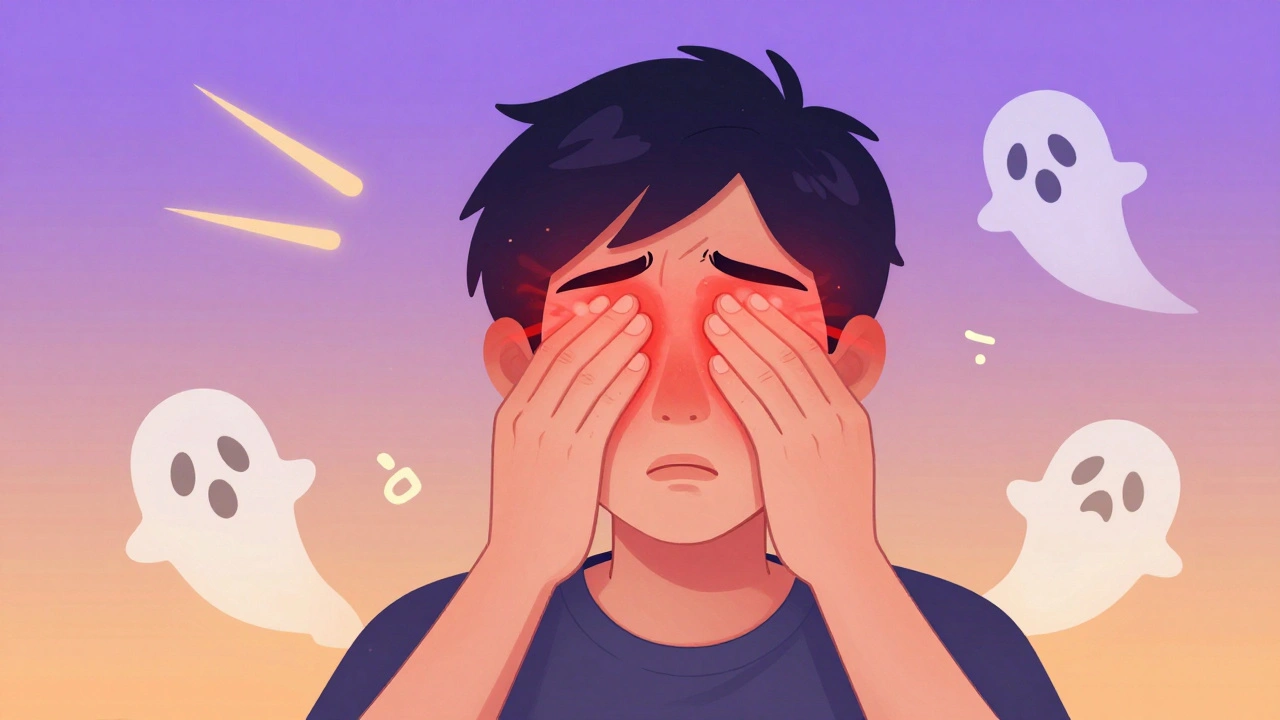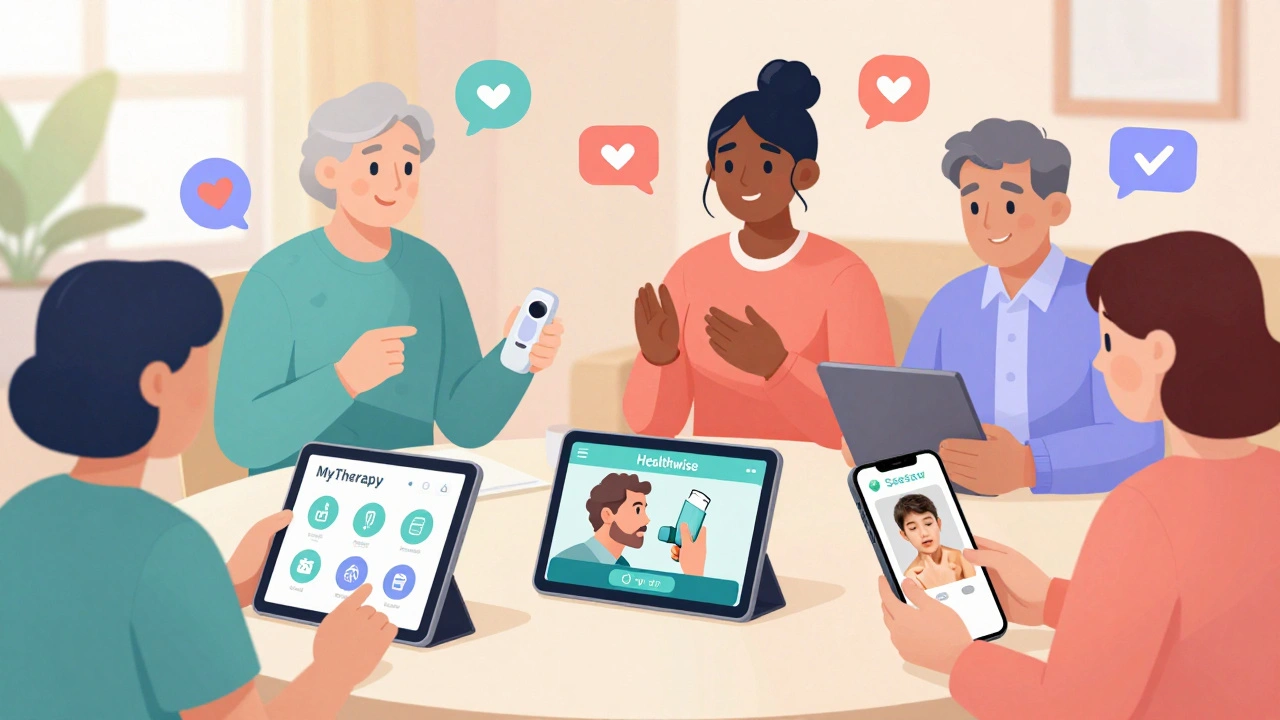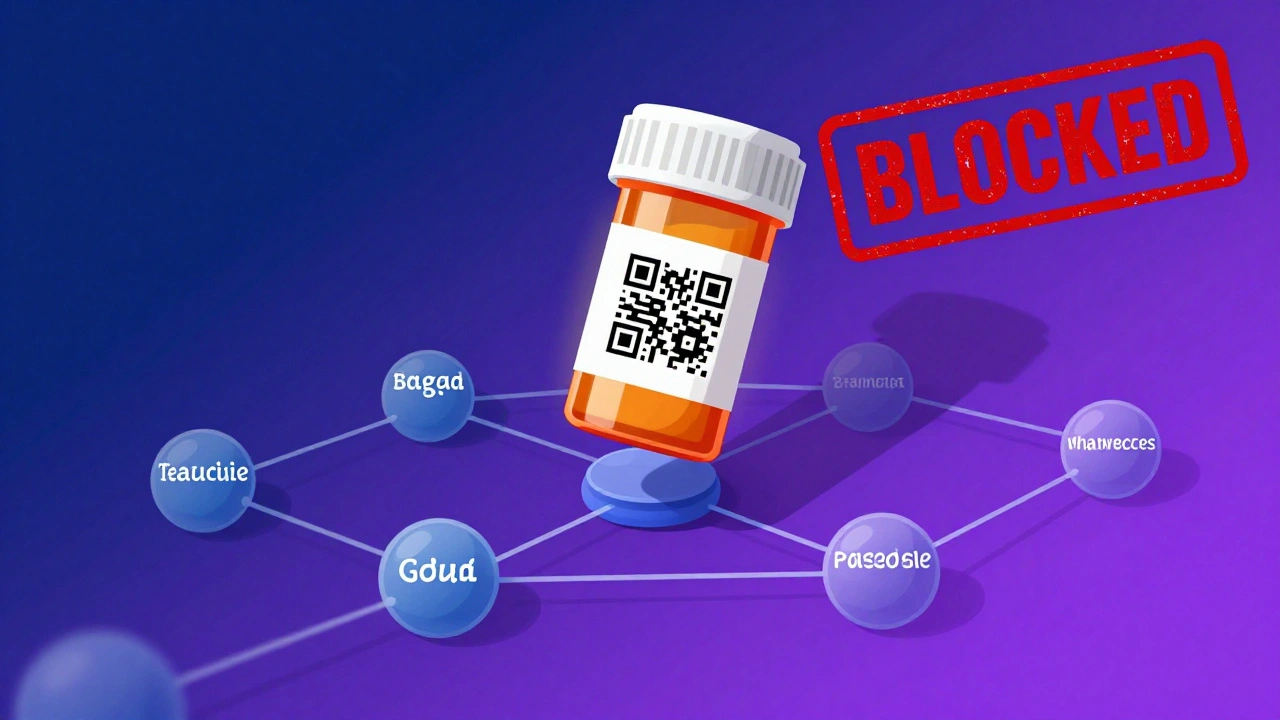Off-Label Drug Use Checker
Every year, millions of Americans take medications that weren’t originally approved by the FDA for their specific condition. That’s not a mistake. It’s not illegal. And in many cases, it’s the best option available. Off-label drug use happens when a doctor prescribes a medication for a purpose, age group, dosage, or route that hasn’t been formally approved by the FDA. This isn’t some shady loophole-it’s a standard, legal, and often life-saving part of modern medicine.
What Exactly Is Off-Label Use?
When a drug gets FDA approval, it’s approved for specific conditions. For example, the antidepressant sertraline was first approved for treating depression. But doctors soon found it worked well for anxiety, OCD, and even premature ejaculation. Those uses? Off-label. The same goes for metformin, approved for type 2 diabetes but commonly used for PCOS and weight management. Or benztropine, approved for Parkinson’s, but often given to kids with movement disorders. Off-label use falls into four categories:- Using a drug for a different medical condition than what’s on the label
- Prescribing it to a different age group (like giving a drug approved for adults to children)
- Changing the dose-giving more or less than the approved amount
- Using a different route-like swallowing a pill meant to be injected, or using a cream as an eye drop
The FDA doesn’t control how doctors prescribe. They only regulate what drug companies can say about their products. Once a drug is on the market, physicians can use it however they see fit based on clinical judgment. That’s been the law since the 1960s.
Why Do Doctors Do It?
There are three big reasons off-label prescribing is so common: lack of approved options, scientific evidence, and patient need.Take pediatrics. Only about 20-30% of drugs have been tested and labeled for children. But kids still get sick. So doctors rely on adult studies, case reports, and expert consensus. In neonatal ICUs, it’s not unusual for 60-70% of medications to be used off-label. The same goes for cancer. In oncology, up to 85% of chemotherapy drugs are used off-label. Why? Because tumors don’t care about FDA labels. A drug that targets a specific genetic mutation might work across multiple cancer types-even if it’s only approved for one.
Psychiatry is another hotspot. About one in three psychiatric prescriptions is off-label. Antipsychotics like quetiapine are often prescribed for insomnia or anxiety, even though they’re only approved for schizophrenia and bipolar disorder. Why? Because the alternatives-sleeping pills or benzodiazepines-carry higher risks of dependence. Sometimes, the off-label option is the safest one.
And then there’s the cost factor. Getting a new indication approved can cost $50-100 million and take five to seven years. For older, generic drugs like methotrexate, companies have zero financial incentive to go through the process. But doctors know it works for rheumatoid arthritis, psoriasis, and even ectopic pregnancies. So they use it.
The Risks Are Real
Just because something is legal doesn’t mean it’s safe. The biggest danger? Lack of data. Off-label uses haven’t gone through the same rigorous testing as approved ones. That means side effects might be unknown, interactions untested, or long-term risks untracked.Remember Fen-Phen? The combination of fenfluramine and phentermine was widely prescribed off-label for weight loss in the 1990s. It worked-until thousands of patients developed severe heart valve damage. The FDA pulled it from the market. That tragedy happened because the off-label use outpaced the science.
Today, we’re seeing the same pattern with GLP-1 agonists like semaglutide (Ozempic). Originally approved for type 2 diabetes, these drugs are now being prescribed in massive numbers for weight loss. Sales have exploded. But we still don’t know the long-term effects on the pancreas, gallbladder, or mental health in non-diabetic patients. The FDA hasn’t approved it for weight loss in most cases-yet doctors are prescribing it anyway.
And it’s not just about side effects. Off-label drugs can interact badly with other medications. A patient on blood thinners might be prescribed an off-label antibiotic that increases bleeding risk. Or an elderly person on multiple drugs might get a new off-label sleep aid that causes confusion and falls. Without standardized safety data, these risks are harder to predict.
Insurance Won’t Always Pay
Here’s the kicker: even if your doctor thinks it’s the right choice, your insurance might not cover it. Most insurers require one of three things to pay for off-label use:- The use is listed in a recognized compendium like the National Comprehensive Cancer Network (NCCN)
- There’s strong evidence in peer-reviewed journals
- It’s similar to an approved use (like using a cancer drug for a related tumor type)
If none of those apply, you might have to pay out of pocket. One oncologist shared on Reddit that they had to fight insurance for three months to get coverage for a child’s off-label chemotherapy regimen. That’s not rare. A 2023 study found that 45% of physicians reported delays of 3-5 business days just to get prior authorization for off-label drugs.
That creates a brutal choice: wait for approval and risk disease progression, or pay thousands out of pocket. For many families, that’s not a choice at all.
How Do Doctors Decide?
Good doctors don’t just guess. They look for evidence. The strongest evidence comes from systematic reviews and randomized trials. But those are rare for off-label uses. So they turn to:- Published case series and clinical guidelines
- Expert consensus from groups like the American Society of Clinical Oncology
- Drug compendia like DRUGDEX or Micromedex
- Real-world data from electronic health records
For example, the NCCN compendium lists dozens of off-label cancer treatments that Medicare will cover. That’s because these recommendations are based on hundreds of studies, not just one or two.
Doctors also document everything. The American Medical Association recommends clearly writing out why the off-label use is being chosen-what evidence supports it, what alternatives were considered, and why the patient’s situation justifies it. That’s not just good practice. It’s legal protection.

Who’s Pushing It?
Here’s the dark side: drug companies can’t legally promote off-label uses. But they find ways around it. In 2012, GlaxoSmithKline paid $3 billion in fines for illegally marketing paroxetine for depression in teens and pioglitazone for prediabetes-both off-label. Pfizer paid $2.3 billion in 2012 for promoting Bextra for unapproved uses.These aren’t isolated cases. Since 2009, pharmaceutical companies have paid over $14 billion in settlements for illegal off-label promotion. The FDA cracked down hard-but marketing pressure still exists. Sales reps may drop hints. Medical education programs may be funded by drugmakers with hidden agendas. Patients hear about a drug on social media and ask their doctor for it, even if the evidence is weak.
A 2018 JAMA study found that 78% of off-label uses lacked strong scientific backing. That’s alarming. It means many prescriptions are based on tradition, anecdote, or marketing-not real evidence.
What’s Changing?
The system is slowly adapting. The 21st Century Cures Act (2016) let the FDA use real-world data-like patient records and insurance claims-to support new drug approvals. That means some off-label uses might eventually become approved, faster than before.The FDA’s 2023 draft guidance on real-world evidence is another step. If a drug is widely used off-label for a condition and data shows it’s safe and effective, the agency can move faster to approve it formally. That’s good news for patients. It means fewer people will need to rely on off-label use in the future.
But here’s the truth: off-label prescribing isn’t going away. Rare diseases. Pediatric conditions. Complex cancers. These are areas where clinical trials are too small, too slow, or too expensive to cover every possibility. Doctors will keep using what works-even if the label doesn’t say so.
What Should You Do?
If your doctor suggests an off-label medication, ask:- Why is this being used off-label?
- What’s the evidence behind it?
- Is it in any official guidelines like NCCN or UpToDate?
- What are the known risks?
- Will insurance cover it? What if it doesn’t?
Don’t assume off-label means dangerous. But don’t assume it’s risk-free either. The best decisions come from informed conversations-not blind trust or fear.
Off-label use isn’t a flaw in the system. It’s a necessary adaptation. Medicine evolves faster than regulations. Sometimes, saving a life means stepping outside the box. But that box was built for a reason-so make sure you know why you’re stepping out.
Is off-label drug use legal?
Yes, it’s completely legal for doctors to prescribe FDA-approved drugs for off-label uses. The FDA approves drugs for safety and effectiveness for specific uses, but it doesn’t regulate how physicians practice medicine. However, it’s illegal for drug companies to market or promote drugs for off-label purposes.
How common is off-label prescribing?
About 20% of all prescriptions in the U.S. are written off-label. Rates are much higher in certain fields: up to 62% in pediatrics, 31% in psychiatry, and 85% in oncology. In some hospital settings, nearly every drug given to a child is used off-label because so few are officially approved for kids.
Why don’t drug companies get more uses approved?
Getting a new indication approved costs $50-100 million and takes 5-7 years. For generic drugs or those with low profit potential, companies have no financial reason to do it. Even for brand-name drugs, if the market is small-like for rare diseases-the cost rarely justifies the effort. Off-label use fills that gap.
Can insurance deny coverage for off-label drugs?
Yes. Most insurers require proof that the off-label use is supported by recognized medical guidelines, peer-reviewed studies, or inclusion in compendia like NCCN. Without that, they may deny payment, leaving patients to pay thousands out of pocket. Prior authorization can add days or weeks to treatment.
Are off-label drugs less safe?
Not necessarily-but they carry more uncertainty. Approved uses have been tested in large clinical trials. Off-label uses often rely on smaller studies, case reports, or expert opinion. That means side effects, drug interactions, or long-term risks may be unknown. It’s not about safety alone-it’s about knowing what you’re getting into.







Sara Mörtsell
October 28, 2025 AT 22:53Doctors prescribing off-label is just capitalism’s workaround for a broken system. The FDA’s slow as molasses while people die waiting for approval. Companies don’t care unless there’s profit. So we get this chaotic patchwork of guesswork and hope. It’s not medicine-it’s survival mode with a stethoscope.
Rhonda Gentz
October 30, 2025 AT 01:56I’ve seen it firsthand. My cousin’s kid with a rare seizure disorder was given a drug approved for adult bipolar disorder. No label. No safety data for kids. But it stopped the seizures. The alternative? A feeding tube and a ventilator. I don’t know if it’s right-but I know it was necessary. Medicine isn’t a manual. It’s a conversation between science and suffering.
Alexa Ara
October 30, 2025 AT 10:17Hey everyone, just wanted to say-this is such an important topic. So many people are scared of off-label use because they think it’s dangerous, but sometimes it’s the *only* thing standing between a patient and a terrible outcome. I’m so grateful for doctors who take the time to dig into the research and advocate for their patients. Keep pushing for better systems, but don’t forget the human stories behind every prescription.
Olan Kinsella
October 30, 2025 AT 20:04Let’s be real. This whole off-label thing is a corporate loophole wrapped in a white coat. Pharma knows they can’t market it-but they whisper it in conference rooms, fund ‘independent’ studies, and let TikTok influencers turn Ozempic into a miracle weight-loss wand. We’re not healing people. We’re running a cult of pharmacological celebrity. And the poor? They pay the price in bills and side effects.
Kat Sal
November 1, 2025 AT 18:15My dad’s oncologist prescribed an off-label combo for his stage 3 lymphoma. Insurance denied it three times. We had to raise $12k in a month. But he’s alive today. I’m not mad at the system-I’m mad at the people who let it be this broken. We need to change how we fund research. Not just for profit. For people.
Rebecca Breslin
November 2, 2025 AT 15:31Off-label use? That’s just amateur hour. If you’re not following FDA guidelines, you’re not a doctor-you’re a cowboy with a prescription pad. I’ve seen patients get liver failure from some random antidepressant prescribed for ‘anxiety.’ The FDA exists for a reason. Stop playing god with people’s lives.
Kierstead January
November 3, 2025 AT 16:09Let me guess-someone’s gonna say ‘but it saves lives!’ Yeah, and the Titanic saved lives too… until it didn’t. You think we’re doing this for science? Nah. It’s because drug companies are lazy and insurance companies are greedy. And now we’ve got a whole generation of patients on drugs that haven’t been tested past a 6-month trial. Wake up. This isn’t medicine. It’s a gamble with your organs.
Imogen Levermore
November 5, 2025 AT 05:19wait… so the fda lets doctors do this… but not the companies?? 😳 like… who’s really in charge here?? 🤔 i think the whole thing is a psyop to make us trust the system while they quietly turn us all into lab rats 💉 #offlabeltruth #curesactisamindcontrol
Chris Dockter
November 6, 2025 AT 18:21Insurance denies coverage. Doctors risk lawsuits. Patients pay thousands. And you call this healthcare? This isn’t medicine. This is a rigged game where the house always wins. The FDA doesn’t protect you. It protects profits. Off-label isn’t a loophole-it’s the whole damn system screaming for reform.
Gordon Oluoch
November 8, 2025 AT 12:43It is not the role of the physician to act as an unlicensed pharmaceutical researcher. The FDA approval process exists for a reason-to ensure safety, efficacy, and standardization. When doctors prescribe off-label without robust evidence, they are not being innovative. They are being negligent. The fact that 78% of off-label uses lack strong scientific backing is not a feature. It is a catastrophic failure of medical ethics. Patients are not test subjects. This must end.